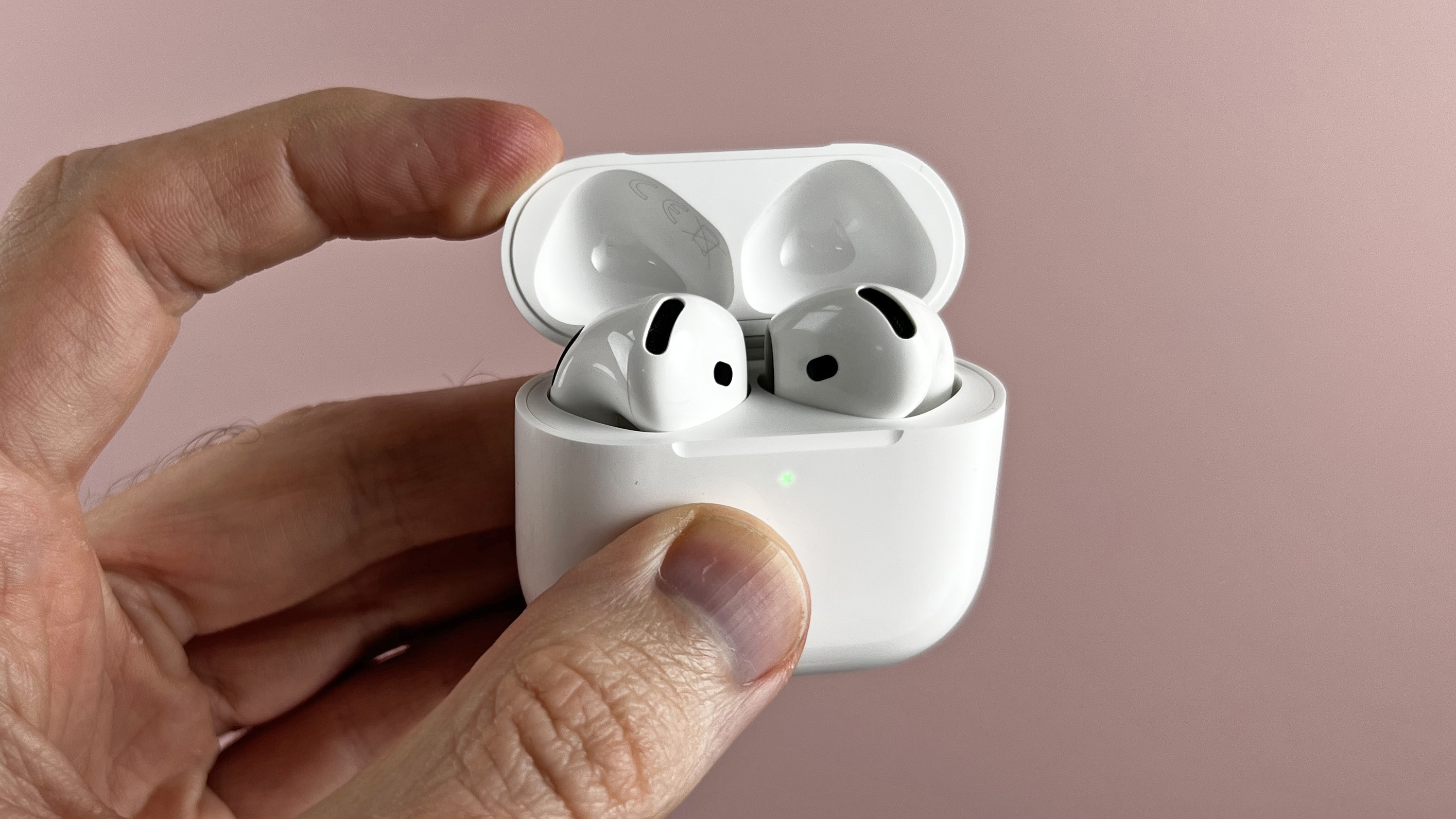
Apple AirPods 4: Two-minute review
Apple's AirPods 4 – which are the cheaper version of AirPods 4 at $129 / £129 / AU$219, not the more expensive model with active noise cancellation and some other extra features – are the latest version of Apple's open-ear wireless earbuds. Designed for people who don't want anything inside their ear canal, the AirPods 4 sit just outside it, and they stay remarkably stable and sound nice while doing it.
But the main refrain you're going to hear throughout this AirPods 4 review is that if you don't mind in-ear tips, you can get better sound quality and a more flexible set of features for a lower price among the best budget earbuds.
There are good reasons for Apple users to stick with AirPods though, because all their best features work with Apple tech exclusively, as you'd expect. The head-tracked spatial audio is so impressive with movies, the auto-device switching between Apple tech is really useful, and it's generally a seamless experience.
The sound is fulsome and fairly dynamic, and it's easy to have a good time listening to all kinds of tracks, thanks to their superb balance between frequencies. But there's a lack of fine detail compared to the mid-range competition that means music lacks that extra realism and deep satisfaction. The open-ear design allows a lot of sound to leak in as well, which interferes with the audio fidelity.
The issue for people at large is the lack of standard Bluetooth multi-point pairing, which means you only get seamless switching if you have multiple Apple devices. Nearly all the best wireless earbuds at a similar price offer multi-point pairing, which means you can switch from an iPhone to a Chromebook or Windows laptop easily – and those earbuds also offer better sound, the option of active noise cancellation, and on-ear volume control – for a lower price than the AirPods 4.
These earbuds do the job for their intended Apple audience, with some great unique features and a good design (I really like the pinch controls) and fit. But if you want real bang for your buck, look to the $119 / £79 / AU$149 Sony WF-C700N or the $99 / £99 / AU$169 Nothing Ear (a).
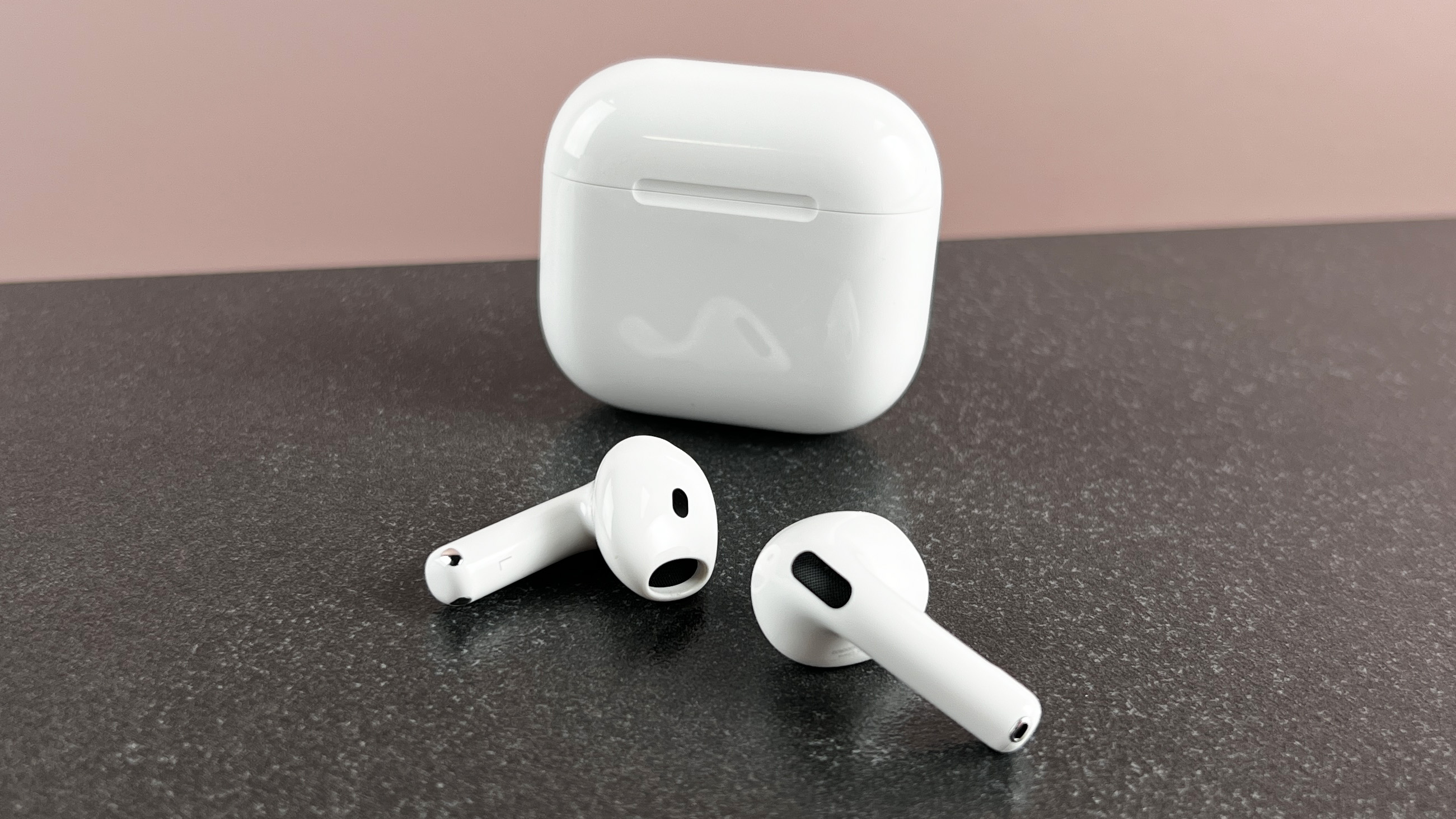
Apple AirPods 4 review: Price & release date
- $129 / £129 / AU$219
- Released on September 20, 2024
- The cheapest current AirPods
With an official price of $129 / £129 / AU$219, the AirPods 4 wander dangerously into 'mid-range earbuds' territory for earbuds with a feature set that's closer to those of budget buds. Apple does now offer discounts on its earbuds around sales events (which didn't use to be the case), but I doubt these will drop under $100 / £100 for quite a while.
It's not a bad price for a pair of good-sounding earbuds with excellent spatial audio, but basically all the competition at this price offer active noise cancellation – including the $99 / £99 Nothing Ear (a), for example.
Apple AirPods 4 review: Specs
Apple AirPods 4 review: Features
- Good features for Apple devices
- No cross-platform multi-point pairing
- No on-ear volume control
As we expect from AirPods, the AirPods 4 only give you the full power of their features if all your devices are Apple-made.
They offer fast pairing with Apple tech, and will auto-switch between any bit of Apple tech you're signed into with your Apple ID, which means they're effectively 'paired' with all your devices at once, whether that's an iPhone, iPad, Apple TV, Mac or Apple Watch. Just start playing something on a new device while wearing them and you can automatically switch, or choose to switch in some cases. It works extremely well, and is a slick benefit of buying into Apple's cosy ecosystem.
While they can be paired with non-Apple devices, you won't get access to most of the features mentioned here, and they don't support Bluetooth's standard multi-point pairing, meaning that if you have an iPhone and a Windows laptop, you'll only get the good features when you’re using the AirPods with your iPhone, and there's no easy switching to your laptop.
They offer head-tracked spatial audio when used with Apple devices, which is a highlight. This means that when listening to anything in surround sound or Dolby Atmos, it'll seem like the sound is coming from a set of static speakers around you that don't move even when you move your head, like a home theater system. I've never been a big fan of this with music because I just tend to move around too much while listening for it to make sense (though I enjoy spatial audio without head-tracking for music, where it just creates a kind of bubble of expanded sound around your head), but spatial audio with movies is just fantastic.
You get a convincing feeling of surround sound, with your device as the 'center' of the home theater effect, and the feeling of speakers all around you. When you're watching movies on a long journey, it really helps you to feel like you're less trapped in a space, and makes the experience more engaging and immersive. I love it.
Speaking of journeys, one nice touch with AirPods (and many of the best Beats headphones) is that you can share audio between them, so two people can watch the same show on an iPad together while traveling.
There's limited support for Apple's Find My service here: the app can tell you where you last had them, and the AirPods can 'call home' via the Find My network of other people's iPhones to tell you roughly where they are. But these don't have the precision finding of the AirPods Pro 2 (where your iPhone can literally point you towards them), or the ability of the AirPods 4 with ANC to play a sound to help you find them.
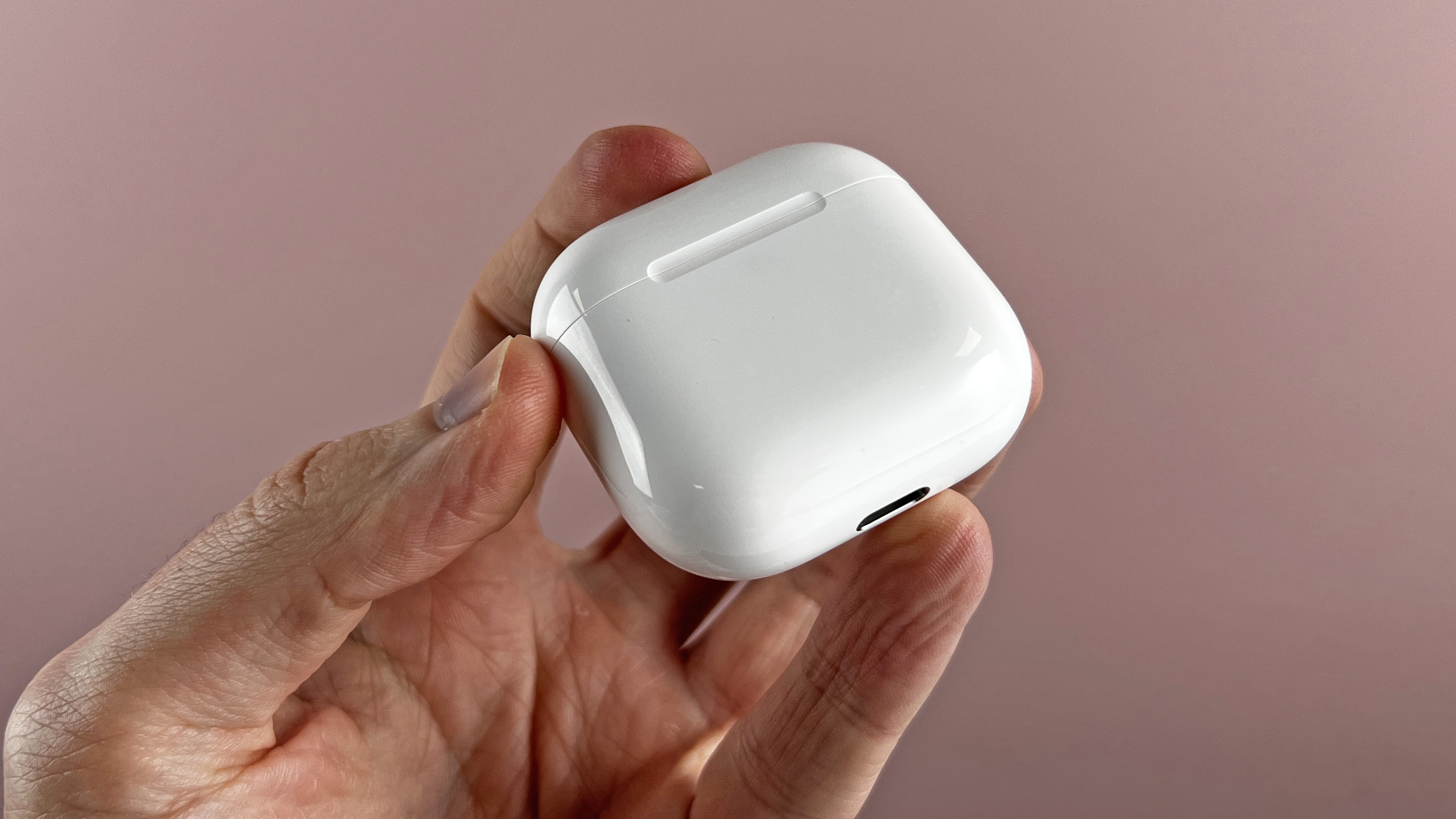
They support 'Hey Siri' so you can ask Apple's assistant for things, though frankly I don't find Siri useful enough to want this turned on. Similarly, the AirPods 4 support Apple's 'Announce Notifications' feature, where Siri's voice will read you out notifications that have arrived on your iPhone or Apple Watch, which I also have turned off. It certainly can be a useful feature in a clutch, but as an Apple Watch user I already have quick access to my notifications on my wrist, and that route doesn't interrupt my podcast.
Still, if you use Announce Notifications (you'll be given the option when you first pair), you can also use the AirPods' new gesture controls to respond to certain notifications by nodding or shaking your head. For example, when my Apple Watch asks if I'm doing an outdoor walk, I can nod to confirm and start the tracking.
These gestures are smartly implemented, with a blip of audio feedback when the AirPods detect that you're moving your head. You'll need to move your head fairly definitively to confirm, so perhaps left, right and left again to reject a notification with a shake of the head, but it's very clear if and when the AirPods are picking up the gestures, though I felt like the head motions I made were a little too exaggerated to be subtle – while waiting with other people to cross a road, I can only assume that people thought I was vehemently agreeing with a radio call-in show or something.
Also for controls, you've got pinchable stems on the earbuds, basically borrowed from the original AirPods Pro. You can pinch to play/pause, double-pinch to skip tracks, triple to skip back, hold to trigger Siri. I really like this control system, because it's comfortable (you don't push the buds into your ears while pressing a button) and works if you're wearing gloves (unlike touch-only systems). However, you can't pinch for on-ear volume control, which seems very miserly.
Apple's claim of five-hour battery life was, frankly, extremely disappointing, but the good news is that in my battery testing at 50% volume the AirPods 4 took seven hours and five minutes to run down from 100% to nothing. Apple says you should get another 25 hours from the case (though that could be as much as 34 hours based on my testing), and that five minutes of charging in the case provides the buds with around an hour of listening time.
Five hours is way behind the curve on battery life, and while seven hours is acceptable for such lightweight buds, it's still not amazing considering there's no ANC here. We measured 9.5 hours from the Nothing Ear (a) with ANC turned off.
There's no wireless charging here, unlike the more expensive models – just USB-C charging.
The microphone quality is very good, as is common for Apple's earbuds. The voice is a little quiet (common for earbuds in general) and there's a little bit of digital artefacting to the sound, presumably coming from the clean-up and processing Apple is applying, but speech is clear and represents your voice well, and that's all we need.
- Features score: 3.5/5
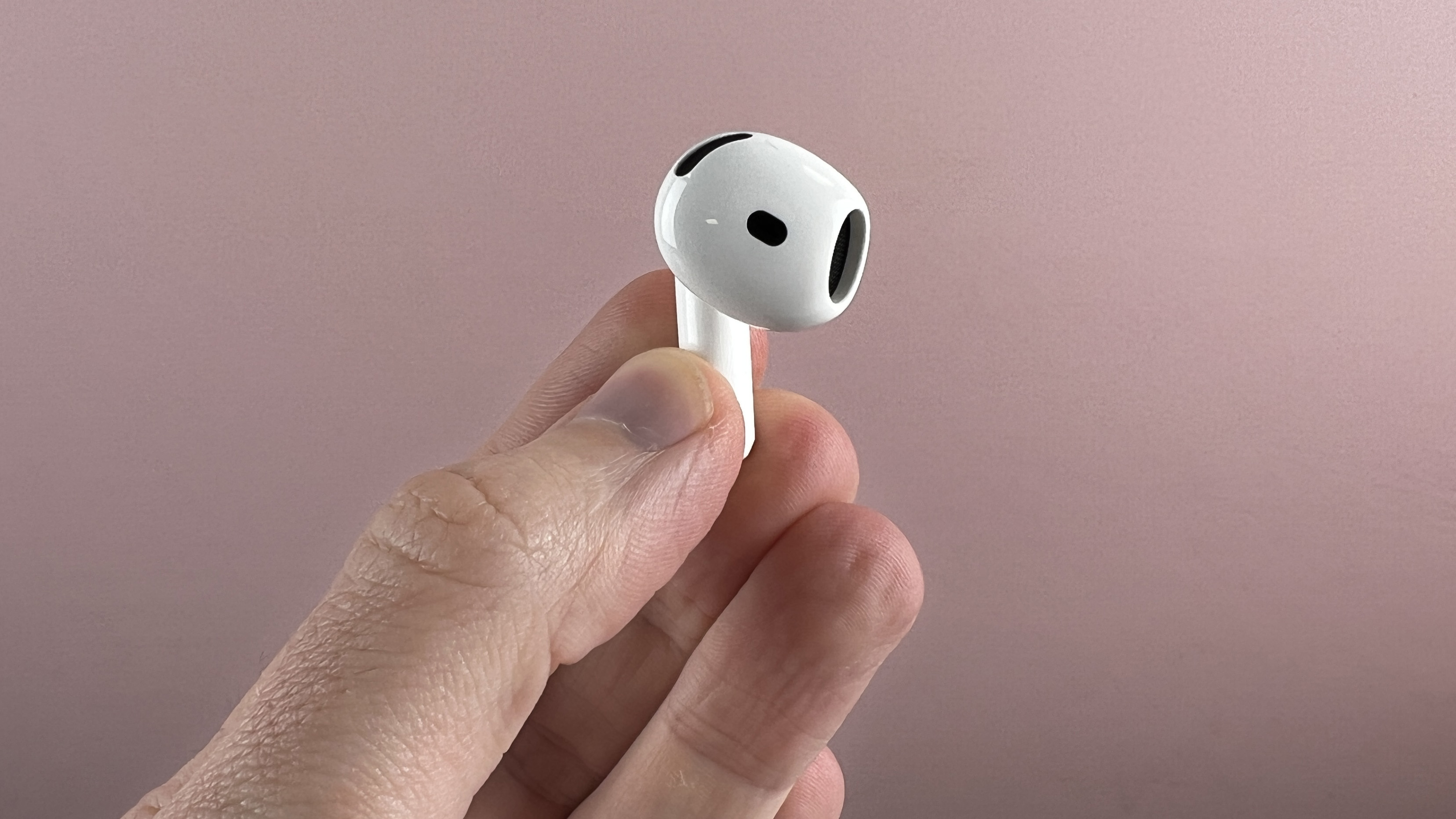
Apple AirPods 4 review: Sound quality
- Very well balanced
- Good bass and energy
- Loss of fine detail
Compared to Apple's previous cheapest AirPods, the AirPods 4 are in another world of sound quality, even without considering spatial audio. They're a bigger, more natural, and more dynamic listen, and I enjoyed music with them.
The bass feels well presented and full, and while it's not super-deep, it underpins things exactly as it's supposed to. It may not hit unctuous levels of sub-bass, but it's really well controlled, so something like the bassline of Allie X's Black Eye bounces along as it should – some cheaper headphones will lack the range for a full bounce, or each beat will hit with a thud. The AirPods are nimble enough to handle this kind of thing.
The mid-range is clear and well resolved, capable of letting individual instruments stand out even among more crammed songs, such as when Moloko's I Want You gets super-busy with lots of overlapping sounds – the AirPods are capable of holding onto each strand, and making sure it doesn’t just turn into a mess of noise. Vocals of all types are lifted out of the mix well.
The treble is similarly well represented, and there's plenty of sparkle in high-frequency details so they shimmer among the rest of the mix. In terms of being a good representation of the bones of music tracks, the AirPods 4 work great, especially since they're reasonably dynamic as well, shifting up a gear in good time when songs pop off.
The problem is that they're soft on fine detail, and it means they're limited to being a fun listen rather than a truly satisfying one, or one that lets you engage with your music at a high level.
The open-ear design that lets in more outside sound doesn't help with this – fine detail is exactly what you lose most from being able to hear chatter or traffic – but I listened in multiple environments and the issue is still there.
When the fine resolution is lost, the realism of the track is lost. That doesn't matter in every track (I wasn't exactly missing it in Eric Prydz' Call On Me, I was just bopping along), but there's a clear difference in a few tracks. Sonny Rollins' St. Thomas is a track that should really put you among the instruments, because it's built around the slight scrape of a drumstick or the click of a tongue on a reed – but that's basically lost when listening on the AirPods 4. The track sounds like a recording, a diminished facsimile, not the close-to-real audio that it can do.
Rains Again by Solji is another clear example – it opens with a heavy rainfall sound that becomes static on headphones that can't deal with the complex detail, but stays as distinct drops on headphones that can deal with it… and on the AirPods 4, it's more in the static column.
With movies, spatial audio works excellently, providing convincing sound that moves around you, doing a great impression of a home theater. There's also a great sense of impact to bassier sounds and a good elevation of treble details – it's exciting to watch action movies this way, and the AirPods' ability to be dynamic is effective here too.
However, dialogue isn't represented as well as effects in the mix, so feels quieter and more unclear, relatively speaking – and with sound leaking in through the open-ear design (and no ANC), it's the first thing to get muddied by outside noises. I compared the AirPods 4 to my AirPods Pro 2, and while the dialogue is a similar level in the Pro 2, the other sounds are closer to that level, so you can just crank the volume up and get a good experience. With the AirPods 4, turning the volume up means effects become a bit much when dialogue gets to the right level.
The lack of fine detail also hits here – for example, during The Matrix's helicopter rescue scene, the cascade of water from the sprinklers becomes a hiss of sound in the background, but again other headphones can pick out the drops. I don't mind this as much here as with the music, though – it's better to have it, but it isn't essential.
I don't think the AirPods 4 are bad for sound at all, but when the competition is as hot for music fidelity as the Sony WF-C700N and the Nothing Ear (a), they pale.
- Sound quality score: 3.5/5
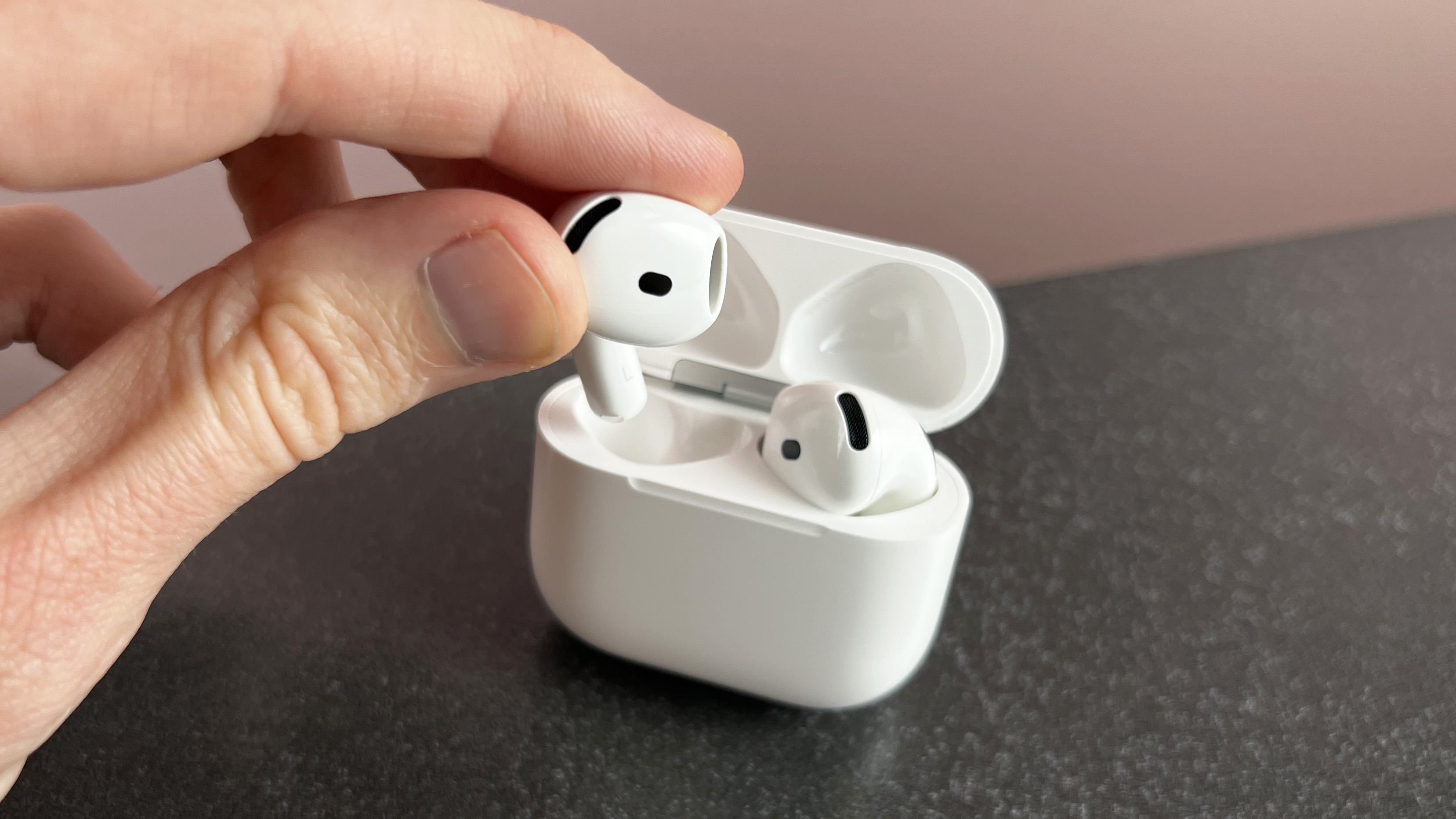
Apple AirPods 4 review: Design
- Secure open-ear fit
- Smallest case yet is great
- IP54 rating for buds and case is good
I've never been a fan of this kind of earbuds design, where they're held in place by the areas of skin around your ear canal – I much prefer the fit of an in-ear tip. However, the AirPods 4 are the best and most comfortable version of this design so far, and I can happily wear then for an extended period without feeling like they're sore or applying pressure, which hasn't always been the case for me. However, when taking them out after a long time, I can slightly feel where they were sitting, so they won't convert me from in-ears just yet.
They're very secure, and didn't shift in any meaningful way during my general use – i.e., mostly while walking or working. They stayed secure while I was jogging too, though I can't promise that this will also be the case for long-distance runs or other workouts.
They're extremely light at 4.3g per bud, which helps with comfort, and they stick out of your ears less far than the AirPods Pro 2 do, which might please some people. And while not everyone likes the stick design, I think it works well for balancing the weight, and this is arguably the most subtle and perhaps preferable version of the design so far.
The case is Apple's smallest AirPods case to date, and I really appreciate that as well – some buds makers perhaps forget that people often just want to slip this stuff into a pocket and not feel it pressing against them. There no reason not to carry these buds with you everywhere, and that's useful.
A nice touch is that the charging light is now totally hidden behind the white of the case – when it's illuminated it appears out of nowhere. A less-nice touch is that the pairing/reset button is now a touch element on the back with no indicator, rather than a physical button, and given that this will mostly be used when people are in a pinch, I think the clarity of a real button was better.
I found that the AirPods 4 are a little harder to grab out of their case than previous models – you'll develop a technique for getting a grip to overcome the magnets, but I suspect that, like me, many people will take a couple of days to get in the groove.
The IP54 waterproof rating for both the earbuds and the case is impressive – not too many mid-range or budget earbuds offer both. This means they should keep dust out, and be fine against water splashes, including rain if you get caught outdoors for a short time.
Incidentally, if you're wondering if it's possible to tell the difference between these AirPods 4 and the ANC model: not from the buds. They are truly identical apart from a tiny printing of the model number. The ANC case has telltale speaker holes on the bottom, though.
- Design score: 4/5
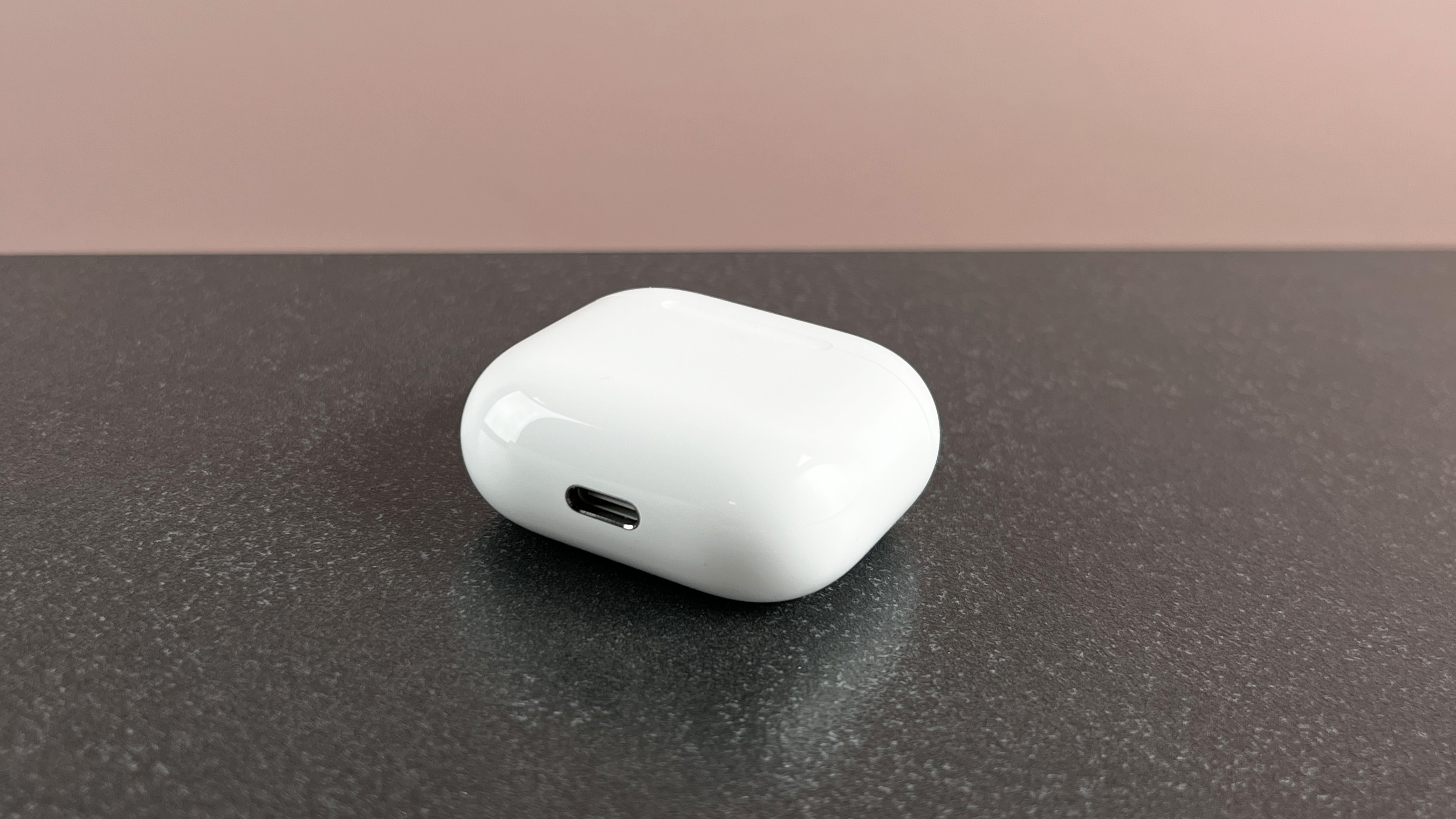
Apple AirPods 4 review: Value
- Cheaper headphones offer better sound
- …and better cross-platform features
- But for Apple-only users, they have big advantages
The AirPods 4 are aimed at people who are big on Apple tech, so I'm taking that into account when scoring their value. But as you've likely already picked up in this review, for sound quality, or if you have an iPhone and a Windows laptop (for example), they don't excel for bang-per-buck.
You'll get the extra realism and detail pop in music that these AirPods lack from the likes of the Sony WF-C700N and the Nothing Ear (a), as well as active noise cancellation to make sure you can really hear it. You'll get Bluetooth multi-point with both those devices as well – and even hi-res audio from the Nothing. They both have on-ear volume control as well (and the Nothing even pinch the great pinchable gestures from the AirPods).
However, if you are all-in on Apple, the auto-switching between all your devices without pairing, the (admittedly limited) Find My support, and the excellent spatial audio all help boost the value here. It is frustrating that the AirPods 4 with ANC offer lots more features, though, including wireless charging, and improved Find My support in the case, in addition to the ANC itself.
Let's not forget the design: some people really don't want ear tips, and my recommended alternatives have them. So if your preference is not to have tips, there's added value to these because of their shape. But still, on balance, I don't think they offer any better value than average.
- Value score: 3/5
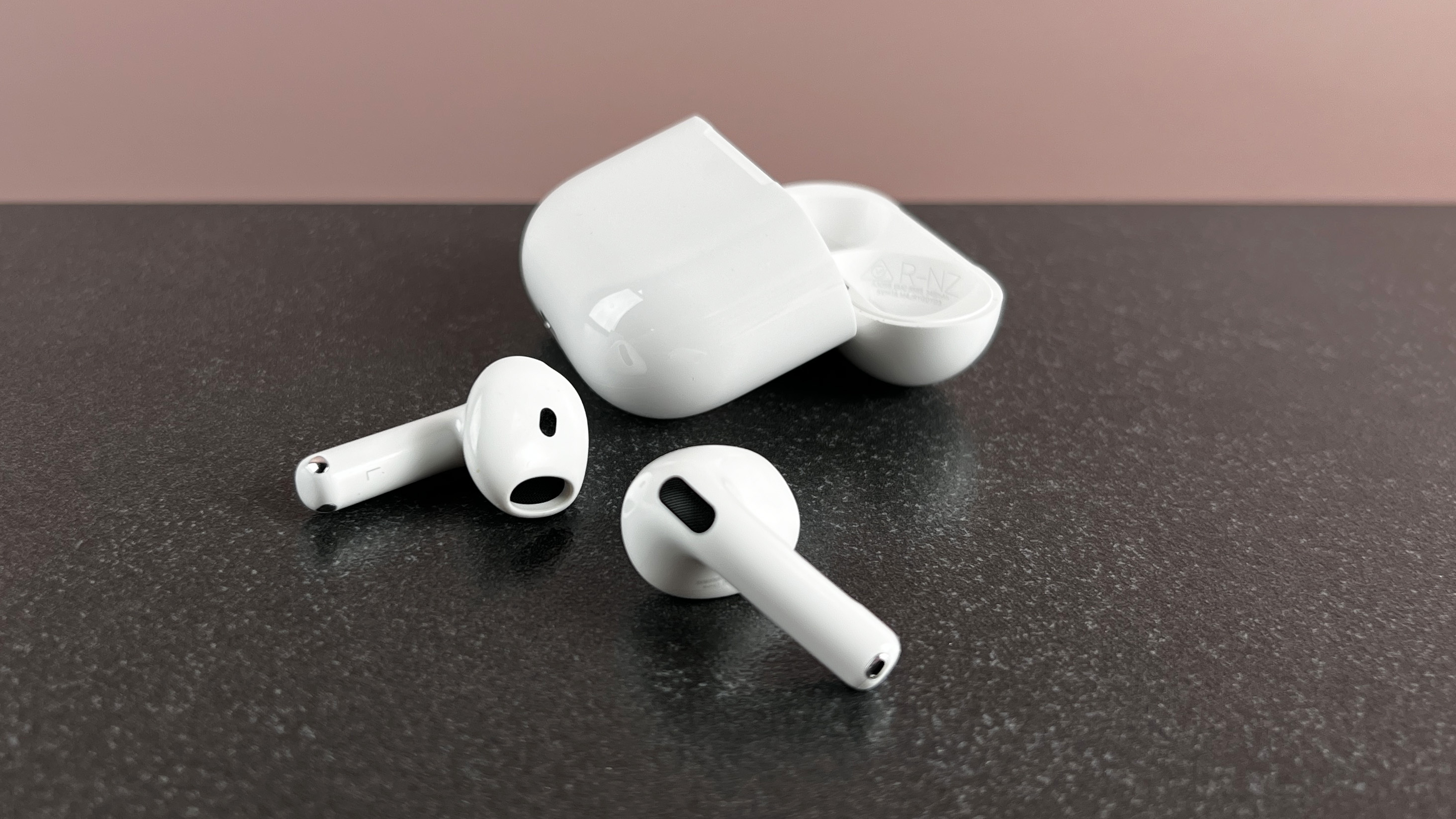
Should I buy the AirPods 4?
Buy them if...
Don't buy them if...
Apple AirPods 4 review: Also consider
How I tested the AirPods 4

- Tested over three weeks
- Connected to an iPhone, iPad Pro and MacBook Air
- Tested alongside AirPods 4 with ANC and AirPods Pro 2
I reviewed the AirPods 4 as part of my typical daily routine, using them at home, at the office, and while commuting. I have an iPhone 13 Pro, MacBook Air M1, iPad Pro, and an Apple TV 4K, so they were used just as Tim Cook intended.
For testing sound quality and battery life, I followed the procedures laid out in our explainer on how we test earbuds.
I had the AirPods 4 with ANC and AirPods Pro 2 available for any direct comparisons that were useful, across Apple's current earbuds lineup.







